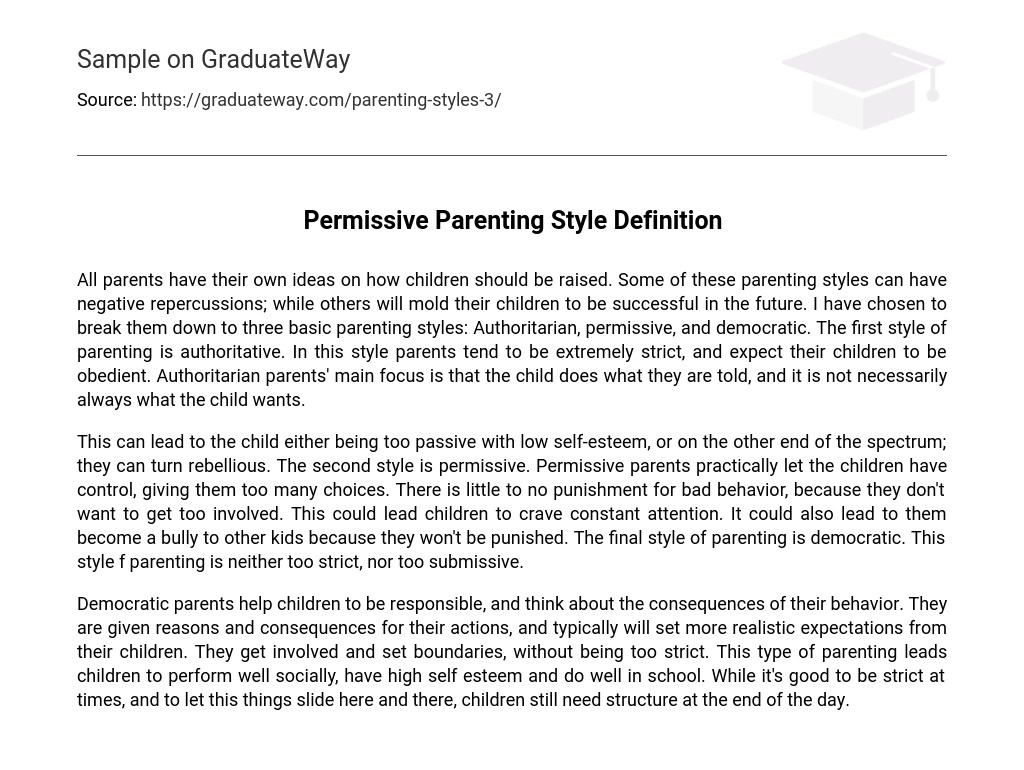All parents have their own ideas on how children should be raised. Some parenting styles can have negative consequences while others can shape children for future success. I have categorized them into three basic parenting styles: Authoritarian, permissive, and democratic. The first style is authoritative, where parents are very strict and expect obedience from their children. The main focus of authoritarian parents is that the child follows instructions, even if it goes against their own desires.
This can result in the child either becoming too passive and having low self-esteem, or becoming rebellious. The second style of parenting is permissive where parents allow children to have control and make too many choices. There is minimal or no punishment for bad behavior as parents do not want to get too involved. This could result in children constantly seeking attention and potentially becoming bullies as they will not face consequences. The final style of parenting is democratic, which is neither overly strict nor submissive.
Democratic parents encourage responsibility and prompt children to consider the consequences of their actions. They provide explanations and outcomes for behavior, and usually establish more attainable goals for their children. They engage and establish limits without excessive rigidity. This approach to parenting promotes positive social performance, strong self-confidence, and academic success. Although occasional leniency may be acceptable, children ultimately require structure.





